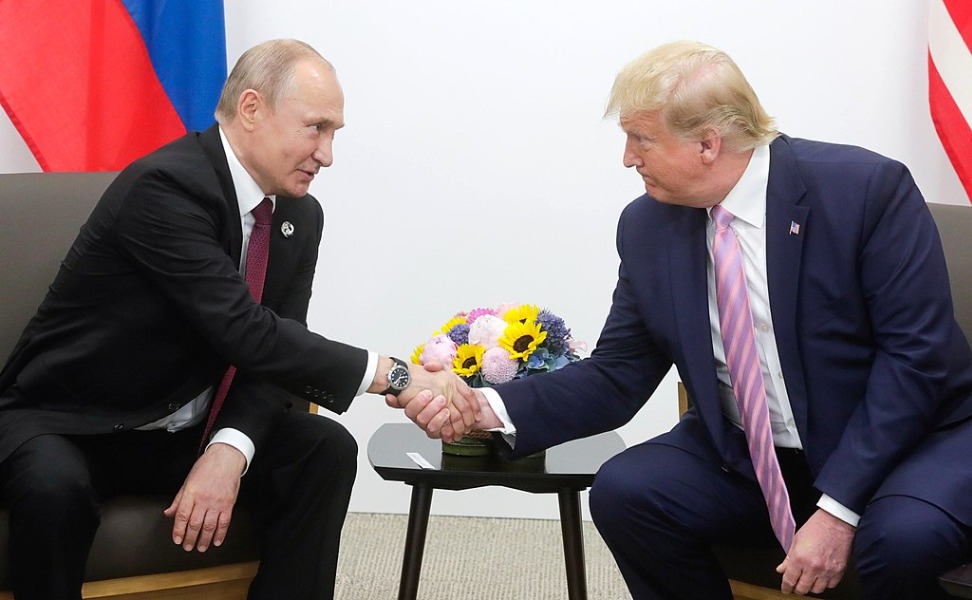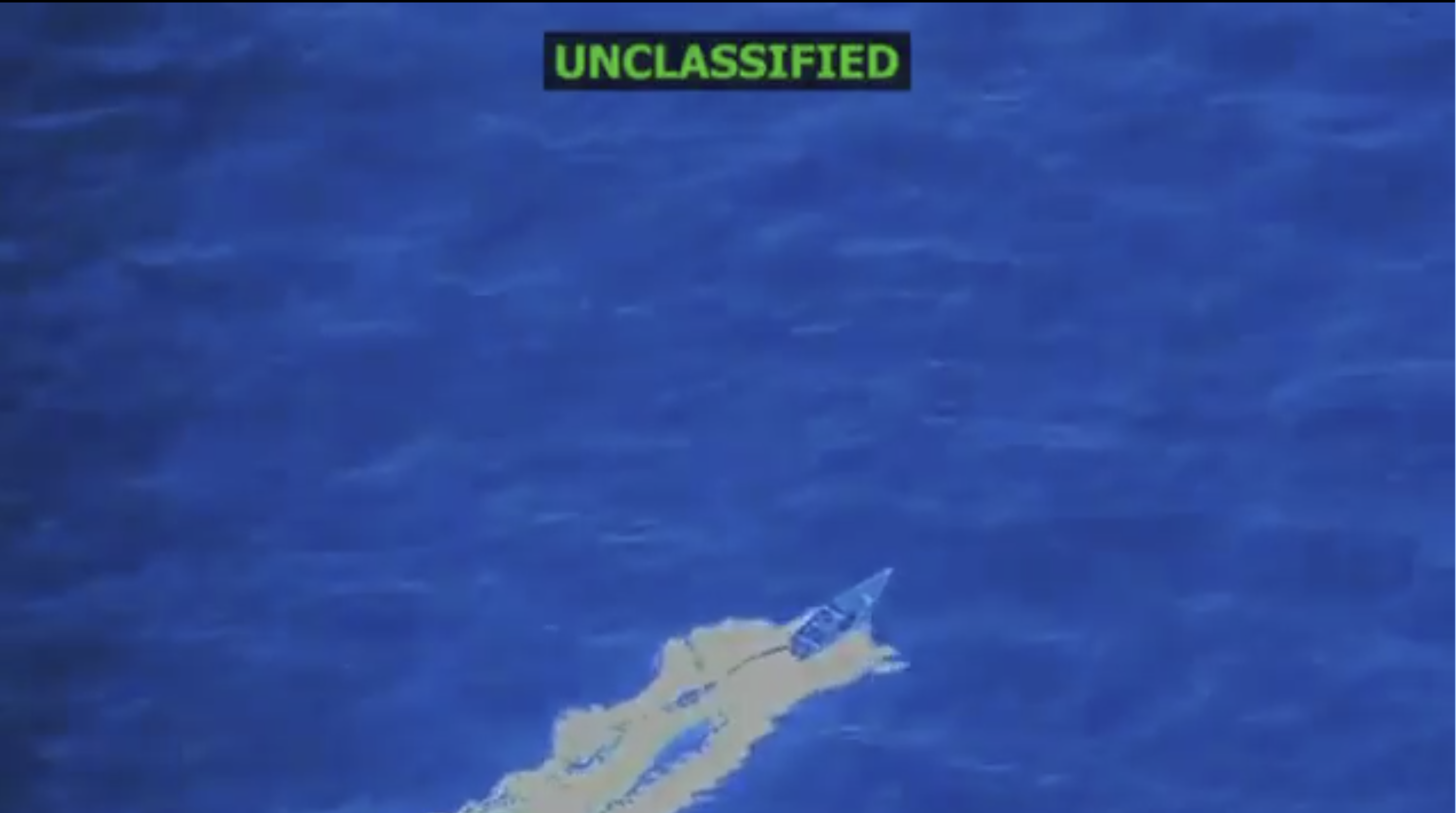All’s Well That Ends Well? Legal Complications of a Russia-Ukraine Ceasefire

Published by The Lawfare Institute
in Cooperation With

President Trump “shocked” allies and analysts alike when he announced a “welcomed” phone call with Russian President Vladimir Putin regarding meeting in Saudi Arabia to broker a deal to “end” the war in Ukraine. Conspicuously left off the guest list is, at least as of now (though apparently subject to change), Ukrainian President Volodymyr Zelenskyy. While Trump’s promise to end the war within 24 hours as president remains unfulfilled, his continued reassurances of and lack of clarity on an impending agreement since the campaign trail has set off the D.C. policy community, resulting in no shortage of prognostications of what such a deal could look like. Official whiplash and waffling notwithstanding, a broad consensus appears to be forming out of this flurry around two potential contours: (a) The alleged “deal” will not be one for formal peace but rather a ceasefire to the hot conflict, and (b) it will likely involve a mix of some kind of security guarantees for Ukraine (though NATO membership now appears out of the question) and Russian—likely de facto—control over the Ukrainian territory its military currently occupies. However, while such an arrangement may quiet the dogs of war, it by no means returns them to the kennel. In other words, the “war” would not necessarily “end,” at least not from the perspective of international law—a perspective critical for understanding the implications of any such negotiations for communities in the contested territories.
Indeed, the question of when armed conflict ceases to exist can be as challenging to answer as how and is a continued source of much consternation for international humanitarian lawyers. As explained in a seminal report from Harvard Law School’s Program on International Law and Armed Conflict, contemporary written law offers fragmented and enigmatic guidance at best on discerning the relevant duties, rights, authorities, and protections arising prior to, at the moment of, or after the termination of the armed conflict. This opacity is particularly complicated in the Ukraine context because of the uncertain positions of the parties and the relative novelty of the situation, which prevents the drawing of parallels to other territorial contestations that differ along several critical dimensions. This unmitigated confusion portends several cascading uncertainties with tangible consequences for the affiliated communities. Discussions about a possible “end” to the war thus spotlight the demerits of the favorite geopolitical strategy of kicking the can down the road and the underdevelopment of jus post bellum, particularly where the two contentions meet in the context of ceasefires.
Talk About Talks
Perhaps triggered by the changing diplomatic ties or the anticipation of an end in sight, the operations on the ground have taken dramatic shifts in the past few weeks and months. Russia has escalated its belligerency recently, launching deadly strikes on civilians in Kyiv and drone attacks on Chernobyl. The ramp-up signals Putin’s high price for coming to heel in the face of any prospective ceasefire talks and a mad dash to acquire as much of a bargaining advantage as possible prior to any such formal discussions.
The shape of Ukraine’s border will be a critical part of any negotiations. Putin previously flatly rejected Trump’s original peace plan, which had suggested postponing Ukraine’s NATO membership. Such rebuffing hints at the truth of his imperialist ambitions and reveals that Putin’s war was never about NATO but, rather, a deliberate and irredentist pursuit to amass territory.
Russia-Ukraine “peace” talks have already undergone several iterations—from a February 2022 meeting in Belarus, to the failed Istanbul talks, wherein Ukraine proposed neutrality, forgoing NATO membership, and accepting Russian occupation, short of recognizing sovereignty, over parts of its territory. Ukraine has previously asked for security guarantees, either via NATO membership or by a separate agreement binding allies to intervene in the event of an attack. Most recently, Zelenskyy called for giving Ukraine nuclear weapons to fulfill the nation’s security needs sans NATO membership—a prospect Keith Kellogg, Trump’s special envoy for Ukraine, has dismissed as “slim to none.” Putin, on the other hand, recently outlined his conditions for peace, which included a demand that Ukraine cede the four partially occupied oblasts, none of which Russia controls completely.
Although time will tell whether the Riyadh talks, which kicked off on Feb. 17, truly represent a Wendepunkt in the conflict and rightful concerns over whether a ceasefire would even hold remain salient, the question of what such an agreement would concretely mean for Russia-occupied territory has been left largely unanswered. Will Russia dig its heels into the idea of formal cession, as it had in the Istanbul talks? Will Crimea and Sevastopol be, once again, excluded from the conversation, as seems likely? Will Ukraine and Russia accept that the occupied territory remains under Russian control, at least “temporarily”? And what effect will this have on the future legal claims and factual reality for those on the ground?
When the End Isn’t Really the End
While the aforementioned rundown offers little clarity as to whether a deal is realistically on the agenda and if, so, what it is likely to include, there does appear to be some speculative consensus that, should there be any “deal,” it will likely take the form of a ceasefire along the line of contact at the time of negotiations. However, both the nature of such an arrangement and the form it may take in this case will have significant international legal implications that directly affect on-the-ground realities for communities living in the contested territories.
The Fog of “Peace”
Before even contemplating the distinct complexities triggered by each side’s likely negotiating position on the question of territorial control, a decision to opt for a ceasefire as a metaphorical gauze on the open wound of active war presents several initial challenges not at all unique to the Ukraine war context. Despite the extensive, complex regime of international humanitarian law, the “subgenre” of rules and norms governing ceasefires is significantly underdeveloped when considered in light of the frequency with which countries employ it vis-a-vis modern conflict. Under contemporary international law and according to general state practice today, the term “ceasefire” is used to refer to “a temporary or permanent cessation of hostilities with or without normalization of relations.” Contemporary state practice also largely treats it as synonymous with the long-historied concept of “truce.”
Further complicating the future, is the relationship between “ceasefire” and “armistice,” which are often conflated and used interchangeably in common parlance. “Ceasefire” formally entered international legal discourse after World War II, taking over the conceptual space formerly occupied by “armistice,” the latter evolving to refer to a termination of war without a formal and full introduction of peace. As Yoram Dinstein has explained, the “modern armistice agreement divests [belligerents] of the right to renew military operations at any time and under any circumstances whatsoever. By putting an end to war, an armistice today does not brook resumption of hostilities as an option.” Principle I, paragraph 5, of UN General Assembly Resolution 2625 (XXV), commonly referred to as the Friendly Relations Declaration, reflects this understanding. It imposes on states “the duty to refrain from the threat or use of force to violate international lines of demarcation, such as armistice lines” (emphasis added). As for state practice, since World War II, parties to conflict have used armstices to terminate the state of war, leaving ceasefires available for merely suspending hostilities according to prescribed terms (see, for example, Israel’s 1949 agreements with Egypt, Lebanon, Jordan, and Syria).
Thus, the reference to “armistice” in Articles 36–41 of the Hague Regulations Respecting the Laws and Customs of War on Land annexed to the 1899 Convention with Respect to the Laws and Customs of War by Land and to the 1907 Convention concerning the Laws and Customs of War on Land (Hague Regulations) is read today to apply instead to “ceasefire.” This distinction has tangible consequences for belligerents, particularly concerning the lawful resumption of hostilities and the application of international humanitarian law. Per Article 36 of the Hague Regulations, to which both Russia and Ukraine are parties, belligerent parties to modern ceasefire agreements of indefinite duration can resume operations at any time upon providing warning in accordance with the agreement’s terms. Furthermore, in the event of a breach of a ceasefire agreement, Article 40 affords the party to such an agreement the right to denounce the violation, and, if necessary, “recommenc[e] hostilities immediately.” Or, as Virginia Page Fortna put it: “Cease-fires are by their nature reciprocal; it is the prospect of return fire that deters attack.” Such a violation, however, would not constitute a violation of the law of armed conflict, since a state of war still technically looms over the parties. As such, the victim party would have no right of “reprisal” wherein it could, as a last resort, violate international law to deter the breaching party. Nevertheless, it should be noted that the U.S. Department of Defense’s Law of War Manual appears to contravene this approach, suggesting that the terms “armistice” and “ceasefire” may be used interchangeably without much regard for legal consequences.
Both “ceasefire” and “armistice” are distinct from a peace treaty, wherein parties to an armed conflict conclude to “end the state of war or the armed conflict between them”—a position also taken by the Department of Defense. Such treaties can either be formal written stricto sensu agreements between the belligerents or agreements struck between a country that is not a party to the armed conflict and one or more of the belligerents that aim to end a non-international armed conflict. It has also been suggested that, given this distinction, the Vienna Convention on the Law of Treaties is unlikely to apply by default to ceasefires or armistice agreements. Such distinctions—however gray and fuzzy their lines—are worth keeping in mind when evaluating media reports contemplating what it would “really take to end” the Ukraine War or “peace talks.” Peace is not peace when one is living under the constant and enduring threat of the resumption of conflict.
While the lack of clarity clouding the termination of hostilities has beleaguered several modern conflicts, the Russia-Ukraine situation is unique in a crucial respect. Unlike other contestations over territory where Russia has injected itself in one way or another, it is a clearly international armed conflict, the goal of which is the formal and forceful annexation of one sovereign belligerent’s territory by the other. This dimension complicates efforts to identify useful models from which the international community may draw lessons concerning state practice. Compare, for example, the situations of Nagorno-Karabakh, Abkhazia, South Ossetia, and Transnistria. To be sure, each has its own complexities that are beyond the scope of this article, but suffice to say that all four differ from Ukraine in that they—even if merely pretextual at least at their current stage—involve separatism and questions of independence. Abkhazia and South Ossetia perhaps offer the closest parallels, considering the background conflict of the Russo-Georgian War. Indeed, an emboldened Putin may use the terms of a ceasefire with Ukraine to chip away at the international norm of territorial integrity further and do in 2025 what he could not yet do in 2008: formally and fully annex the two breakaway regions. Another heavily editorialized ceasefire, the agreement struck between Israel and Hamas earlier this year, is also an imperfect guide, given the complicated and somewhat sui generis nature of the conflict, as well as the debate over its classification under international humanitarian law.
Some experts have also cited Korea as a potential analogue; however, the agreement terminating hostilities on the Korean Peninsula provided for both a ceasefire and an armistice and specified in its preamble that its objective was to “establish[] an armistice which will insure a complete cessation of hostilities and of all acts of armed force in Korea until a final peaceful settlement is achieved.” In Article 2 of the agreement, parties agreed to “order[ing] and enforc[ing] a complete cessation of all hostilities in Korea by all armed forces under their control, including all units and personnel of the ground, naval, and air forces.” The armistice further makes clear in Article 5 that it is to “remain in effect until expressly superseded either by mutually acceptable amendments and additions or by provision in an appropriate agreement for a peaceful settlement at a political level between both sides.” And remain in effect it has—for over seven decades. However long a Russia-Ukraine ceasefire deal is intended to last, given Russian revanchism and Ukraine’s fervent desire to “one day” reclaim any lost territory, it’s unlikely to live that long—nor is it likely to intend to. Ceasefires are diplomacy’s quick-and-dirty, short-term fixes for intractable problems. They are quite literally tourniquets to stop immediate loss of life due to active conflict, but not much more. If well drafted, they may certainly help “foster” peace, but the two certainly are not tautological. A ceasefire doesn’t replace peace. It isn’t meant to and shouldn’t be (falsely) expected to.
Dueling Positions
Exacerbating the general disclarity of a ceasefire are the likely positions of the two belligerent parties—both of which must be considered given the reciprocal nature of (successful) such agreements, notwithstanding possible moves to cut Ukraine out of negotiations. While the game of statecraft requires some furtiveness, public statements and each parties’ behavior helps support some speculations about what Ukraine’s and Russia’s respective positions will be.
Toward the end of last year, Zelenskyy reportedly asserted that, while Ukraine may not have the necessary military strength to retake all its territory under Russian control, it would not legally cede any of it—a concession that would involve near-impossible constitutional procedures—and will seek to “get [it] back in a diplomatic way.” Thus, at a minimum, Kyiv is likely to demand that any land designated to remain in Moscow’s hands would only be under de facto Russian control. Indeed, considering the position Zelenskyy has publicly staked out, Ukraine may even go so far as to push for a label of “occupation”—although it is unclear what bargaining power the country will have to levy such demands.
Should Ukraine press on this position and succeed, this would formally install Russia as an occupying power over the controlled territory (that is, Crimea, Donetsk, Kherson, Luhansk, and Zaporizhzhia). In terms of legal realities and obligations vis-a-vis the population in the oblasts at issue, little would change from the status quo: Per Common Article 2 of the four Geneva Conventions, international humanitarian law continues to “apply to all cases of partial or total occupation of [a party’s] territory … even if the said occupation meets with no armed resistance.” The existence of the ceasefire has no bearing on whether an international armed conflict continues to exist from a legal perspective. Furthermore, as the International Court of Justice (ICJ) explained in the 2004 advisory opinion concerning Legal Consequences of the Construction of a Wall in the Occupied Palestinian Territory, key provisions of occupation law continue to apply even after military operations end. These provisions are detailed in Article 6(3) of Geneva Convention IV and apply so long as the occupying “[p]ower exercises the functions of government in [occupied] territory.” Paragraph 106 of the same advisory opinion also clarified that “the protection offered by human rights conventions does not cease in case of armed conflict,” save treaty provision on permissible derogations. An occupying power must carry into force the occupied state’s obligations in the occupied territory, including for human rights.
The essential element for determining such occupation is an occupying power’s ability to exercise “effective control” (not to be confused with the ICJ’s effective control test for determining a state’s responsibility for armed groups), which is a distinctively and objectively factual determination. According to Article 42 of the Hague Regulations, “[t]erritory is considered occupied when it is actually placed under the authority of the hostile army,” and this designation extends “to the territory where such authority has been established and can be exercised.” As the International Criminal Tribunal for the former Yugoslavia explained its seminal Tadić decision, “the law of belligerent occupation ceases to apply whenever the Occupying Power loses effective control [of] the occupied territory.” For states parties, including Russia and Ukraine, of Protocol Additional I to the Geneva Conventions, both the protocol and the four Geneva Conventions continue to apply “in the case of occupied territories” until “the termination of the occupation.”
Nevertheless, it is unclear why Ukraine would expend valuable negotiating capital on such a label. As discussed above, occupation is a factual determination—it doesn’t depend on the formalities of nomenclature. Furthermore, as discussed below, in the context of extraterritorial, de facto control, international dispute-resolution bodies have likewise undertaken a factual analysis of effective control to distill and determine state responsibility. Furthermore, taking this route—that is, formalizing a designation of belligerent occupation in the relevant territory—may limit the protections granted to the affected population. Although there has been increasing willingness to depart from the traditional view that international human rights law and international humanitarian law are mutually exclusive, many of the most important international human rights treaties permit potential derogation during “public emergenc[ies],” such as war, that “threaten[] the life of the nation”—a lacuna even the ICJ has “observe[d].” Thus, by demanding the continued recognition of a state of belligerent occupation, Ukraine may be providing Russia fodder for an argument to support the deprivation of more protective human rights.
However, considering the responsibilities that come with occupier status, Russia’s seeming upper hand in both the kinetic war and diplomatic battle, and domestic pressures and expectations, Russia also has no incentive to cease hostilities. Emboldened by warming relations with the United States, it also has no reason to back away from its desire to claim full territorial and legal control over Crimea and the other disputed oblasts. These realities may compel the parties to adopt creatively vague language that satisfies Russia while still paying at least some lip service to—at least what used to be deeply entrenched—fundamental norms of international law, including territorial integrity and the prohibition against the use of force.
Russia, for its part, has demonstrated its comfort with operating in the gray (see, for example, Abkhazia, South Ossetia, and Transnistria). Such opacity may embrace a somewhat more flexible de facto arrangement that obfuscates the factual analysis of occupation law’s “effective control” test. This, in turn, prompts questions of what, if any, relationship and responsibilities would exist between Moscow as a de facto controlling sovereign and the affected populations.
More alarmingly, the UN Security Council may enter the fold under its Chapter VII authority as it did in 2004, when it expressly blessed the “termination” of the U.S. occupation of Iraq—and may even call on other states to recognize the new lines of control as delineated in the agreement. Such a political and rhetorical move could trigger a UN Charter and international law crisis, both because it would be completely detached from legal doctrine and the factual realities in which it is grounded and because of the real possibility that states would defy any such obligation out of concern for what such recognition might presage and implicitly christen.
Furthermore, under Article 52 of the Vienna Convention on the Law of Treaties, which is widely recognized as reflecting customary international law, a treaty “procured by the threat or use of force in violation of … international law” is void. Even if discounted by the U.S. policy community as doctrinaire, many U.S. allies take such international legal obligations much more seriously and may bristle at any compulsion to recognize such an agreement, resulting in a splintering of global positions on its validity and real-word implications. Any such analysis, however, may be complicated by Ukraine’s prior openness to negotiations to end the war.
If the contested oblasts are not formally ceded to Russia and thus not “Russian,” and if Ukraine stipulates to, at the very least, de facto Russian control—withdrawing its military and any control it continues to maintain over them as “Ukrainian”—then what are they? Recognizing the inherent limits of speculative analysis, such questions are imperative to evaluate now considering their implications for the human lives that hang in the balance below all the politics and law.
Law, like nature, abhors a vacuum, and dispute resolution bodies appear willing to assess on-the-ground realities to impose various obligations and liabilities on the de facto controlling government to avoid “gaps” in the coverage of various legal regimes. Here, examples from international human rights law and investor-state arbitration are instructive.
In a handful of cases where the European Court of Human Rights (ECtHR) was called to determine the extraterritorial application of human rights law in territories under de facto control, the court applied the aforementioned “effective control” standard to prevent what would otherwise constitute a legal void in the administration of such rights. Specifically, while not explicitly overruling the structure territorial standard in Banković and Others v Belgium, in the years since, it has scrutinized the military, political, and financial influence provided by the de facto government to determine whether it exercises “effective control,” triggering the assumption of human rights obligations under the European Convention on Human Rights (although Russia withdrew from the convention in September 2022, the approach may be instructive for other dispute resolution bodies with jurisdiction over claims brought under treaties to which it remains a party). Thus, in Ilascu and Others v. Moldova and Russia, for example, the ECtHR found that, because the Moldovan region of Transnistria “remains under the effective authority, or at the very least under the decisive influence, of the Russian Federation,” Russia was extraterritorially liable for violations of the convention (it did, however, also find that Moldova “even in the absence of effective control over the Transdniestrian region[,] still has a positive obligation [...] to take the diplomatic, economic, judicial or other measures” to the extent it can “to secure to the applicants the rights guaranteed by the Convention”). In Chiragov and Others v. Armenia, the ECtHR restated its position “recognis[ing] the exercise of extraterritorial jurisdiction by a Contracting State when this State, through the effective control of the relevant territory and its inhabitants abroad as a consequence of military occupation or through the consent, invitation or acquiescence of the government of that territory, exercises all or some of the public powers normally to be exercised by that government.” In the context of the contested oblasts, it could thus be argued that, however vague the ceasefire’s terms as to Russian control may be, they provide sufficient bases to impose human rights obligations on Russia vis-a-vis the affected populations.
This position, which recognizes the ceasefire’s intent of actually ceasing hostilities, seems to accord with the ECtHR’s recent ruling in Georgia v. Russia (II). There, the ECtHR found that it lacked jurisdiction to review the actions of and impose extraterritorial human rights obligations on an invading state during active hostilities in territory it belligerently occupies within the invaded country, reasoning that “the very reality of armed confrontation and fighting between enemy military forces seeking to establish control over an area in a context of chaos not only means that there is no ‘effective control’ over an area … but also excludes any form of ‘State agent authority and control’ over individuals.’”
As for investor-state arbitration, the “Crimea cases” are particularly illuminating. In 2022, French and Dutch courts were called on to interpret the 1998 Russia-Ukraine bilateral investment treaty (BIT) in the context of investor disputes arising out of Russia’s 2014 invasion of Crimea. In so doing, they had to address the prospect of a major gap in the application of the BIT and determine what if any legal cover Ukrainian investors with pre-2014 business ventures could be afforded. This raised the thorny dilemma of whether to recognize Crimea as part of Russian “territory” for the purposes of the BIT. Citing the late international legal scholar Ian Brownlie, the tribunal resorted to an ordinary reading of “territory” as land within a “state’s exclusive possession and control,” which could be “equate[d] with the actual and effective exercise of jurisdiction” despite an absence of lawful title. Interestingly, Ukraine itself supported this position, acknowledging the “practical reality” of Russian control over Crimea.
De facto Russian control—however that may ultimately be construed—over the territories will also have implications for third parties, particularly on questions of recognition. The ICJ’s Namibia advisory opinion carved out recognition of basic human rights of civilians living under illegal occupation, such as for recognition of birth certificates issued by the occupying power. Nevertheless, complications remain in practice. For example, the European Union has refused to recognize Abkhazian passports, which has limited Abkhazians’ right to travel and even receive medical care in the Schengen zone. In December 2022, it extended this nonrecognition to Russian travel documents issued in the occupied Ukrainian territories.
***
War is unparalleled in its toll on humanity—a toll with which Ukrainians have undeniably become all too familiar. And a ceasefire is undeniably a laudable goal and one that must be pursued in earnest to prevent the continued spilling of blood. But it isn’t a panacea. Indeed, among the many lessons to take away from the calamity of Gaza is that the international community needs to stop treating bandages like miracle cures. Shorthands such as “ceasefire” and “armistice” serve little value if they do not at least somewhat effectively capture broader conceptual ideas that not only meaningful put states—both belligerents and third parties to a conflict—on notice as to what their responsibilities vis-a-vis a particular conflict are but also help individuals and private entities prepare for and navigate such circumstances once they are imposed.
In the course of undertaking the Augean task of halting the hot conflict in Ukraine, states must not lose sight of the Herculean challenges that emerge in the no man’s land between active hostility and durable peace. As Wisława Szymborska, a personal hero of the authors and who herself was no stranger to war, poetically recognized, cleaning up after a war is its own incredibly arduous task.




.jpg?sfvrsn=5a43131e_9)

